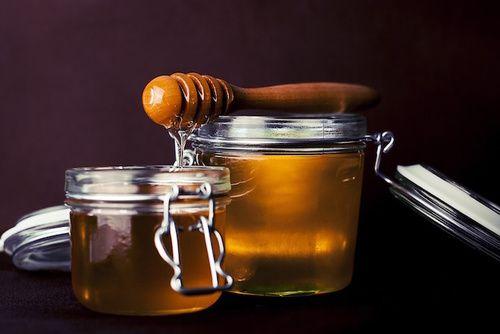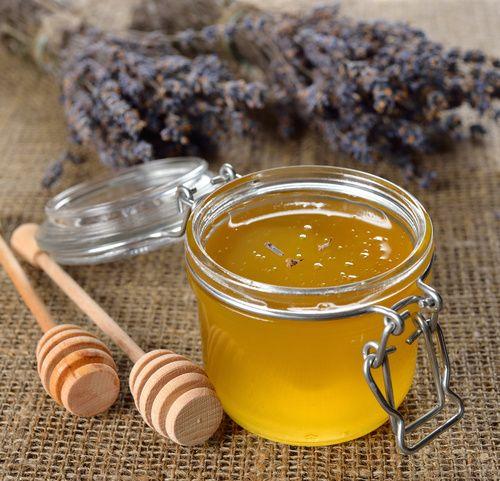Honey it is an antibacterial and antibiotic food ally of the immune system, widely used not only for natural health but also in cosmetics. Let's find out better.
> 1. Description of honey
> 2. Properties and benefits of honey
> 3. Honey, ally of
> 5. Curiosities of honey

Description of honey
The word honey seems to derive from the Hittite melit, a neutral form to which the Latin word mel is linked, from which the figurative use of the term melle is also borrowed. Many believe that sugar and the honey are equally nutritious. Yet the latter has many virtues that sugar lacks.
Peter Molan, professor of biochemistry and director of the Honey Research Unit at the University of Waikato in Hamilton, New Zealand, studies beneficial virtues of honey for over 15 years. In one of his laboratory experiments, Dr. Molan sprinkled seven types of bacteria usually responsible for wound infections with honey.
All seven types of bacteria have been neutralized by the precious bee product. In France, the scientist Bernard Descottes, head of the Department of Internal Surgery and Transplantation at the Limoges Hospital, started using honey to treat some scarring problems and to treat wounds as early as 1984, with extremely positive results. who brought him to Descottes has formulated a real "honey-based therapy", which he renamed with the name of "apitherapy".
Properties and benefits of honey
One of the most important functions of the honey is that antibacterial and antibiotic: many types of honey contain considerable quantities of hydrogen peroxide, that is, of hydrogen peroxide, the same that is usually used to disinfect wounds. The high temperatures to which honey is subjected during pasteurization neutralize some beneficial substances: to obtain the maximum bactericidal effect, the ideal is raw, untreated honey.
In addition to stopping superficial infections, honey eases the symptoms of gastric ulcers and is used for the treatment of Diarrhea which, especially in children, can be dangerous because it causes dehydration. Honey is also effective against the constipation, as it contains large amounts of fructose, sugar capable of reaching the large intestine without being digested. Fructose also confers a particular sweetening power and a prolonged energetic effect because, while glucose is burned immediately, fructose has emollient properties thanks to which it remains “available” for the body longer.
The calories contained in honey are 304 kcal per 100g of product
Depending on the type of honey, the therapeutic properties also change: the Acacia honey acts positively on the digestive system, the forest honey is indicated in influenza states, the orange honey has healing properties, the Sunflower honey it is anti-neuralgic, febrifuge, recommended against cholesterol. Again, the heather honey it has an antirheumatic, antianemic action, the linden honey calms menstrual pains, is calming, diuretic and digestive, while il millefiori honey has a detoxifying action on the liver.
Honey, ally of
Immune system, digestive system, liver, skin
Honey is an excellent food for combating coughs. Check out other cough foods

A recipe up your sleeve
Along with tea it is sometimes nice to serve something that comes straight from your hands. Here is the recipe for simple and excellent Honey biscuits. Ingredients
- 100 gr of butter,
- 1 sachet of yeast,
- 1 teaspoon of cinnamon powder,
- ½ teaspoon of cloves powder,
- about 300 g of flour type "0",
- 150 g of raw cane sugar,
- 2 eggs,
- 50 g of honey.
Method
Place the flour, sugar, butter, honey (preferably more compact), two eggs and spices in a large bowl (or on a pastry board); mix the ingredients well until you get a homogeneous and smooth dough. Wrap the dough in cling film and place it in the refrigerator for at least an hour.
After the necessary time, take the dough and roll it out on a pastry board, giving it a thickness of about ½ half a centimeter; with molds of various shapes, obtain various shapes from the dough, which you will gradually place on a baking sheet lined with parchment paper, spacing them 2-3 cm from each other.
You can choose the most imaginative shapes or give the green light to your own imagination, taking risks in the most unlikely forms. When you have filled the first pan, bake it at 180 degrees for about 15 minutes (or as soon as the edges of the biscuits begin to color slightly).
In the meantime, prepare the icing (or icings) by mixing icing sugar together with any food coloring and a little boiling water: add the water in very small doses (half a teaspoon at a time), and mix vigorously until you get a creamy mixture and very dense.
If the mixture is too liquid, add more icing sugar, if it is too thick, more hot water. As soon as they are out of the oven, brush the cookies with icing. If you keep them in a tin box, they will last longer.
Curiosities about honey
- Zeus, the mythological father of gods and men, as a child obtained his first nourishment from the honey of Panacride, a bee that lived on the Ida, near the mountains that have the name of Panacri. Callimachus tells it in his hymns.
- Miele is also the name of a character of Milo Manara who debuted in 1986: she is an unscrupulous and captivating, fascinating journalist.
Discover the other products of the hive
Other articles on honey:
> Lavender honey: characteristics, properties and use
> How to use honey and other dry cough remedies
> Honey and turmeric, natural antibiotic against seasonal ailments
> The honey of the stingless bee
> Pink salt and honey
> Honey, when to prefer it
> Honey cake, the recipe


























